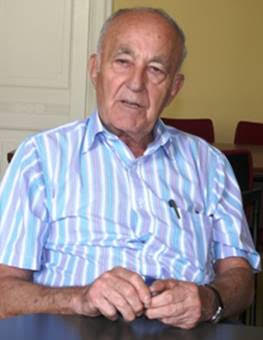
THE VOICE OF INTERNATIONAL LITHUANIA
|
VilNews has its own Google archive! Type a word in the above search box to find any article.
You can also follow us on Facebook. We have two different pages. Click to open and join.
|
Front page
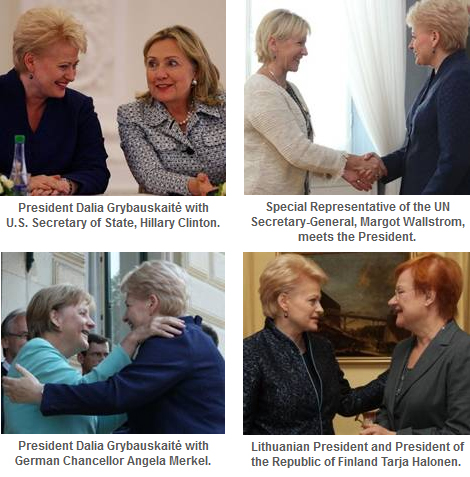
Last year Lithuanian President Dalia Grybauskaitė hosted several important meetings with ‘women issues’ on the agenda.
Leading women of the world met in the Presidential Palace on 30 June for the Conference Women Enhancing Democracy: Best Practices organized on the initiative of the Lithuanian President and President of the Republic of Finland Tarja Halonen.
On 1 July, President Grybauskaitė had meetings with U.S. Secretary of State Hillary Clinton, Kyrgyz President Roza Otunbayeva, Kosovo President Atifete Jahjaga, the EU High Representative for Foreign Affairs and Security Policy Catherine Ashton, and Special Representative of the UN Secretary-General on Sexual Violence in Conflict Margot Wallstrom.
- Bookmark :
- Digg
- del.icio.us
- Stumbleupon
- Redit it
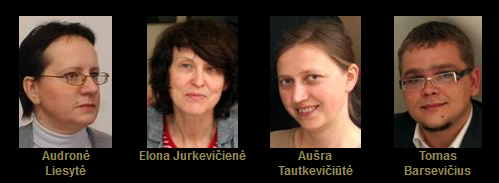
The Klaipeda Municipality tem planning the new crisis centre for women:
· Ms. Audronė Liesytė, Head of Social Care Division
· Ms. Elona Jurkevičienė, Head of Project Division
· Ms. Aušra Tautkevičiūtė, Chief Specialist of Construction and
Infrastructure Development Division
· Mr. Tomas Barsevičius, Chief Specialist of Project Management
Subdivision, Project Division
One of the biggest problems that Lithuania faces today is violence against women. Statistics claims that 63% of all women in Lithuania suffered from physical and/or psychological violence, whereas world average is 33%.
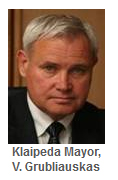 Klaipėda becomes a pioneer in this social blind spot
Klaipėda becomes a pioneer in this social blind spot
In an interview with Klaipeda’s Mayor Vytautas Grubliauskas last year, I asked him if he thought Klaipeda could be a good example for other Lithuanian municipalities with regards to this very severe problem.
The mayor answered:
“Thanks to funds from Espersen Foundation, Klaipėda becomes a pioneer in this social blind spot. What we will see with rise of this building, however, is not a problem solution, only a shelter for severe societal problems. Although the shelter is extremely needed, Klaipėda will never be an example if violence will persist. Therefore I see immediate need for social evolution towards extermination of violence against women in general. For that we need awareness campaigns and education from early school age. Only with such package of measures I will be able to call Klaipėda as good example for other municipalities.”
Lithuania's port city has for years had a women's shelter for women, but has now taken a huge step forward and is already well underway with the planning of what is probably going to be Lithuania's most modern and advanced crisis centre for women. The new centre is expected ready summer 2012.
- Bookmark :
- Digg
- del.icio.us
- Stumbleupon
- Redit it
- Posted by - (0) Comment
VilNews focus in March-April
Healing the wounds
between LT-Americans
and the homeland
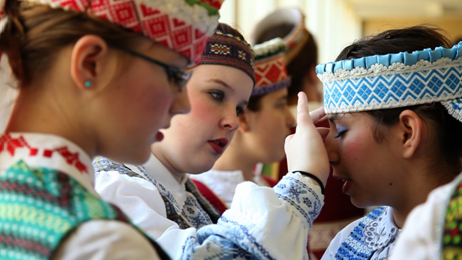
Photo: National Lithuanian American Hall of Fame
Aage Myhre, Editor-in-Chief
aage.myhre@VilNews.com
The relationship between Lithuania’s diaspora groups in the U.S. and the home country Lithuania is not always the best. Many here in Lithuania still believe that those who left, whether for economic or political reasons, had very comfortable lives compared to those who stayed behind and had to fight through several decades of inhuman oppression and abuse by the Soviet occupiers.
Many Lithuanians in the United States believe in turn that the mother country does not welcome them to return or collaborate on improving the development of the nation called Lithuania, and have been critical about ongoing corruption, that rule of law is still not working effectively, etc.
VilNews will through the second half of March and early April focus on this topic, and we hereby invite all with views to prepare posts; in the form of blogs, comment articles or information you think might shed light or be of benefit to the relationship. The goal is to build bridges and contribute to reconciliation!
These are some of the challenges and opportunities we face:
1.
Lithuanian-Americans played a significant role in the post-war years, until Lithuania's recovered independence in 1990-1991, by constantly exerting pressure on the U.S. President and leaders in other Western countries so that they would pressure the Soviet Union to allow the Baltic countries freedom after the Soviet occupation that took place during World War II. Now, as more than 20 years have passed since the freedom bells rang, the question is whether the Lithuanian-Americans have a role to play also today? See our article https://vilnews.com/?p=8899
2.
“The majority, I believe, are disappointed and discouraged with the present president’s seemingly unfriendly view toward Lithuanian-Americans and others abroad.” This said Regina Narusiene, President of the World Lithuanian Community, in a recent interview (see https://vilnews.com/?p=6704), based on a comment referred to in The Baltic Times, where President Grybauskaite should have said that most prominent U.S. Lithuanian émigrés, instead of focusing on developing U.S. - Lithuanian business ties, prefer providing political advice to the Lithuanian authorities, which may not be that necessary nowadays. She was supposedly “disappointed by Lithuanian émigrés’ inability to attract U.S.-based investments to Lithuania.” Here in VilNews we often hear Lithuanian-Americans say they do not feel welcome to their home country, and that Lithuania's current president seems to antagonize them. What are our readers’ comments to this?
3.
In a VilNews interview Regina Narusiene told about her youth in Chicago, after she and her family had settled there after escaping from Lithuania in 1944. One of the things she said, was: “I realized that my father was afraid of informers who could make life difficult for us, for our relatives who remained in Lithuania, and for the Lithuanian partisans who kept on fighting against the Soviet occupants well into the 1950s. The KGB had their own spies within the Lithuanian communities in the U.S., so we were extremely careful with what we said outside the home." Now, when the KGB archives have been made public, are there new traces of KGB post-war activities to be found also in the U.S.?
4.
In a meeting at the Lithuanian Embassy in Washington last year, representatives of LAC (Lithuanian American Council) expressed their concern on a wide range of topics including Lithuania's developing energy policy, the country’s image in the international community, emigration issues and their demographic impact, the prospect of maintaining citizenship rights of recent immigrants, ongoing cooperation between organizations of the Diaspora and Lithuania, and minority issues in Lithuania. LAC representatives suggested that Lithuania would benefit significantly by availing itself of the expertise and knowledge found in the Diaspora communities in developing energy and security policies and a host of other areas such as environmental issues, ecology, medicine, economic development, and the promotion of improved interactions between the government and the people through non-governmental organizations (ref. https://vilnews.com/?p=5031). Has there been any official Lithuanian response to this?
5.
In November 2011, the Jewish Lithuanian Heritage Project hosted a roundtable “Think Tank” at the Lithuanian embassy in Washington. The theme of the discussion was, "A comprehensive Five Year plan to improve Lithuanian-Jewish relations: Cultivating Sunflowers." (ref. https://vilnews.com/?p=9949). In a response, one of our readers wrote: “Is this about the establishment of a new Judenrat to apologize for Lithuanian anti-Semitism? “If truth be told” having a holiday party at Lithuania’s D.C. Embassy is not revolutionary. What would be revolutionary would have been, and would be, is the prosecution of Lithuanian collaborators and SS members, the prosecution of today’s neo-Nazi youth groups, reinstatement of the ban against the display of the swastika and ending the noxious practice of the Uzgavenes holiday when people dress as Jews and beg on the street.” Harsh words?
- Bookmark :
- Digg
- del.icio.us
- Stumbleupon
- Redit it
- Posted by - (0) Comment
11 March marks the restoration of
Lithuania's independence – how can the
authorities allow neo-Nazis to dominate
this important day for the nation?
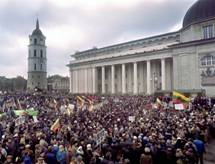 Lithuanians marching for freedom, 10 January 1990. Photo: Vitaly Armand/AFP/Getty Images |
 Neo-Nazis marching in Vilnius 11 March 2010. Photo: http://defendinghistory.com |
For the fifth time in the past five years a neo-Nazi parade (this year with a permit enabling a maximum of 2,000 participants) will march through the heart of Vilnius on 11 March, Independence Day, one of the proudest and most significant days for the people of Lithuania. The neo-Nazi theme will be “Homeland.”
Their display, if permitted by the government, will be taken by extremists throughout the region and Europe as a stamp of growing approval of neo-Nazi activities and a signal that the murder of about 95% of Lithuania’s Jewry during the Holocaust, largely by local collaborators, is taken lightly by today’s government.
Help us ban this blemish on a day reserved for the celebration of the internationally acclaimed bravery of the March 11th 1990 declaration of independence that was and continues to be a source of inspiration to all nations seeking freedom from oppression and foreign domination. Allow Lithuania a Day of Dignity.
Help combat racism and anti-Semitism with your signature to the following petition. You’ll find the petition text HERE.
11 March is not a day to
glorify the perpetrators

By Olga Zabludoff
When I learned that the municipality of Vilnius had again issued permits for a neo-Nazi march on Lithuania’s March 11th Independence Day, I was disturbed for more than one reason. Why would the government, which has been purporting its wish for reconciliation with its small Lithuanian Jewish community and Jews everywhere, sanction the resurrection of a Holocaust image? Why would the government, which has been purporting its wish to better its tarnished image with worldwide Jewry, accept and endorse the display of the LAF white armbands imprinted with the flaming swastika? Most survivors of the Lithuanian Holocaust are more traumatized by memories of the white-armbanded Lithuanian Activist Front than by memories of Hitler’s Aryan henchmen. It was the local LAF murderers who began to butcher Jews who had been their neighbors -- this even before their German Nazi masters/commanders came upon the scene. It was the LAF who unleashed the Holocaust in Lithuania. It was then that their slogan was born: “Lithuania for Lithuanians!” (Lietuva Lietuviams).
- Bookmark :
- Digg
- del.icio.us
- Stumbleupon
- Redit it
It is possible to offer some counterweight
- Posted by - (0) Comment

By: Myra Sklarew
When I stood in Rotuses Square in Kaunas last September, I listened to a young man speak about the burden he had carried in his young life to know that his own grandfather had been one of the killers during the War, a member of the Lithuanian Activist Front and part of a mobile killing unit. The young man asked forgiveness.
And when I stood with a group of some fifty people next to the place of massacre of over 2000 Jewish people in Kedainiai—a place where twenty-nine of my own family members were murdered, I saw how Lithuanians were making the enormous passage across time and cultural divide to embrace a wrong that they had nothing to do with. I ask myself if I have done enough in my own country to right the wrongs committed by my forebears.
- Bookmark :
- Digg
- del.icio.us
- Stumbleupon
- Redit it
Some fresh pictures from Kaziuko Muge 2012
- Posted by - (0) Comment
- Bookmark :
- Digg
- del.icio.us
- Stumbleupon
- Redit it
- Posted by - (0) Comment
Architecture carries
the identity of Lithuania
on its shoulders
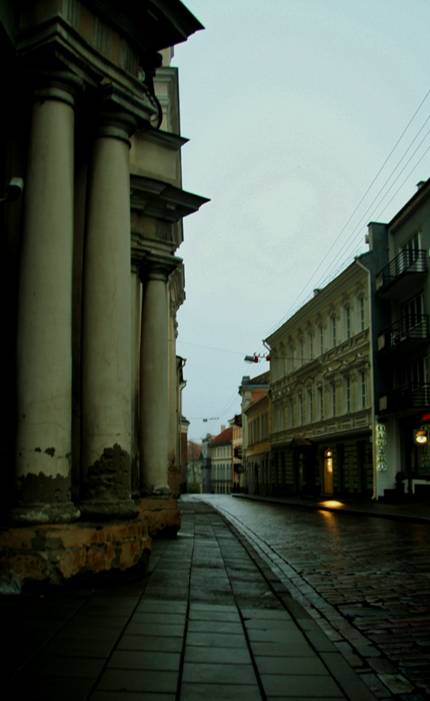
ABOVE: My first project in Vilnius Old Town, Dominikonų g. 5 , 1993-1995.
See also https://vilnews.com/?p=1549.
I had seen a lot of great architecture around the world before I came to Lithuania more than 20 years ago. Yet I had never seen a country whose identity was carried by architecture. Most countries have their unique architecture and national monuments, but here I was suddenly faced with a nation where many centuries of history and life were clearly recorded in the buildings and the surrounding, unique urban environment called the Vilnius Old Town. Walking through this exciting history book is what increasingly makes Lithuania's traditional architecture a magnet for visitors from around the world. For it is precisely here that they find the essence of architecture; experiencing that buildings, styles, streets, squares, ornaments play in perfect harmony with human life and activities, in a symbiosis found nowhere else in the world.
Text: Aage Myhre, VilNews Editor-in-Chief/architect
aage.myhre@VilNews.com
Vilnius is called the "world's most Italian city outside Italy," and also "Europe's most baroque city north of the Alps". Before the Baroque made its appearance, Vilnius was considered one of the world's three leading Renaissance cities (!), in competition with Milan and Florence. However, although the Lithuanian architecture has its roots in Italy, it also developed its own distinctive character, which now once again delights and surprises visitors from near and far.
Unfortunately, this wonderful national heritage was not preserved and continued too well during the years when Lithuania was occupied by the Soviet Union. Also today, there is devoted minimal attention to this heritage, the very identity of Lithuania. Buildings and environments that have been completed over the past 20 years have too much become pale, indifferent copies of Western countries 'modernist architecture' instead of development projects based on Lithuania's phenomenal genuine, beautiful traditions in architecture and living environments.
Fortunately, there are still ancient urban districts and buildings throughout the country that remind us about what a proud and powerful identity Lithuania had in the past. And thankfully, authorities and many others understand that these fine monuments must be preserved as the proud bearers of identity they still are.
Bravo!
But it surprises me greatly that today's architects and planners are not willing to listen to Lithuania's own ‘identity-music’ instead of following in the footsteps of the West’s often banalising, so-called modern architecture.
A Lithuanian architecture that honour and take into account the nation's identity would not cost more, it would make the new building environments more attractive and warm, and it would show the world that Lithuania is a proud nation with deep roots in culture and history, virtually unparalleled. So why wait?
Let me exemplify what I have in mind...
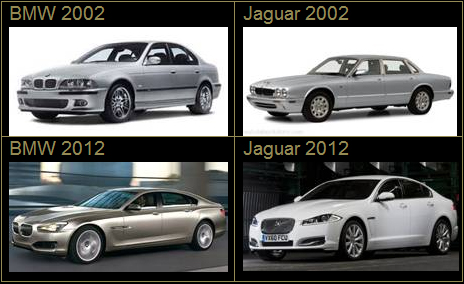
- Bookmark :
- Digg
- del.icio.us
- Stumbleupon
- Redit it
A weekend of books in Vilnius – once again
- Posted by - (0) Comment
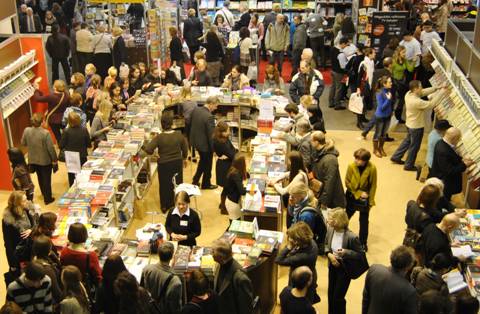
Text and photos: Diana Koval
An annual cultural refreshment weekend for all those who cannot imagine their life without books finally happened and as always it was fabulous. Vilnius International Book Fair for the 13th time opened its doors to the numerous visitors from all over the country. Last year there were about 60 thousands of them, and about the same amount of guests are expected to visit Litexpo exhibition center during this last weekend of February.
- Bookmark :
- Digg
- del.icio.us
- Stumbleupon
- Redit it
- Posted by - (0) Comment
Lithuanian camps in
postwar Germany issued
their own money!

Frank Passic, Michigan, USA.
Dear readers,
We are delighted and honored that Mr. Frank Passic has graciously offered to share with us his vast knowledge of Lithuanian numismatics. In this first article he provides us with a very interesting look into how Lithuanians living in Displaced Persons camps, following World War II, dealt with the situation of currency to help them survive in their daily lives.
Frank Passic of Albion, Michigan has collected, researched, and written about Lithuanian numismatics for many years. His educational displays of Lithuanian money have won numerous awards at state and national coin shows in the United States. Of Lithuanian heritage, his maternal grandparents emigrated from Lithuania to America just prior to World War I. Frank may be contacted at: albionfp@hotmail.com
We know you will enjoy this first article and Mr. Passic has agreed to share with us many more of his writings so we definitely have a lot to look forward to – Ačiū labai Frank
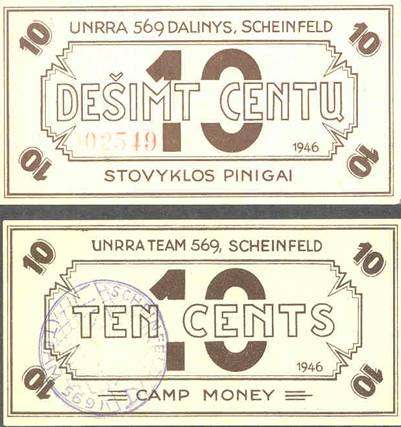
Money from the Scheinfeld Displaced Person Camp.
Bavaria, Germany, 1946.
- Bookmark :
- Digg
- del.icio.us
- Stumbleupon
- Redit it
- Posted by - (0) Comment
| More about money… | ||
 |
Russian Rouble – invented in Lithuania? |
|
 |
President Smetona on the 10-litas note |
|
 |
1st and 2nd round of Lithuanian litas |
|
 |
Vagnorkės – Talonas 20 years anniversary |
- Bookmark :
- Digg
- del.icio.us
- Stumbleupon
- Redit it
- Posted by - (0) Comment
Old and new bank
architecture in Lithuania
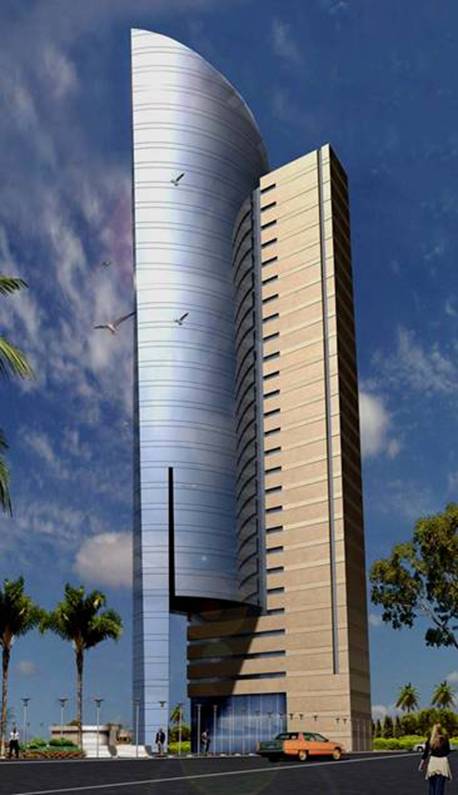
New bank buildings appear, also in Lithuania. The banks SEB, DNB, NORDEA and
UKIO still have their headquarters in older buildings in the Vilnius city centre while
two other banks, Swedbank and Danske Bank, are headquartered in new buildings
just outside the centre. The challenge for banks of today, here as in the rest of the
world, is to express their own identity and at the same time show environmental
adaptation when their new buildings are erected. The picture above illustrates
how I think a new bank building in the Vilnius outskirts can both demonstrate
respect and belonging to the city's fantastic architectural history while also
being innovative, inspiring and audience-friendly. Real materials, such as
traditional bricks, as ‘bottom line’, combined with a future-oriented,
optimistic glass building in front would, in my opinion, symbolize
the future of Lithuanian banking sector in a good way.
Text: Aage Myhre, architect and editor-in-chief
aage.myhre@VilNews.com
I've had the pleasure of studying bank architecture for more than 30 years. My primary task when I completed my master studies in architecture in Norway involved the analysis and criticism of bank buildings, and I touched the subject also later, when I studied architectural psychology in France. Bank architecture is very fascinating because banking is a profession that has always been keen to signal dignity and sometimes power, while money itself does not have a separate visual identity.
Greek temples with solid pillars in front was long a favourite theme, while one in recent decades have experimented with all sorts of, often divergent, symbolism variants.
Also in the Baltic States has one in recent years seen attempts to develop identity buildings for banks; from mafia-like castles with dark glass as the main theme, to more power-demonstrating buildings where Soviet ideology still seems to apply.
Fortunately, there are also brighter examples ...
Let me invite you on a tour through the history of banking architecture, globally and here in this country. Allow me also to share some thoughts with you about why bank architecture is important for the monetary economy's future, and how new bank buildings should best adapt to the long and strong architectural tradition this country represents, even in a global context.
These are my topics of the day:
1. History of bank architecture
2. Pre-war banks in Lithuania
3. Jewish banking in Lithuania
4. Banks during Soviet years
5. ‘New’ banks in old buildings
6. ‘New’ banks in new buildings
7. What should characterize a
bank building of today?
- Bookmark :
- Digg
- del.icio.us
- Stumbleupon
- Redit it
- Posted by - (0) Comment
![]()
Lithuanian economy in 2012:
We expect this year
to be turbulent
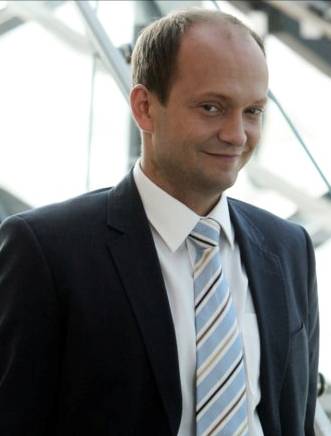
Nerijus Mačiulis, Chief Economist, SWEDBANK.
In the first three quarters of 2011, the Lithuanian economy expanded by 6.4% over the same period a year ago; the expansion was driven mainly by household consumption and investments. During the same period, average quarterly growth was a solid 1.8% but probably decelerated in the last quarter of 2011, when GDP was some 6% higher than a year ago. The economy probably grew by 6.3% in 2011, in line with our forecasts.
We expect this year to be more turbulent, and prospects less sanguine. The recession looming in the euro zone will affect the Lithuanian economy not only directly, via slower growth of exports, but also indirectly, via lower household and business expectations. Although, in our main scenario, the euro zone economy contracts by only 0.3% in 2012, the risk of less orderly developments and increasing tensions is high. We have cut our growth forecast for 2012 to 3.3%, down from 4.2% and to 4.0% in 2013, down from 4.2%.
- Bookmark :
- Digg
- del.icio.us
- Stumbleupon
- Redit it
- Posted by - (0) Comment
Numismatics in VilNews!
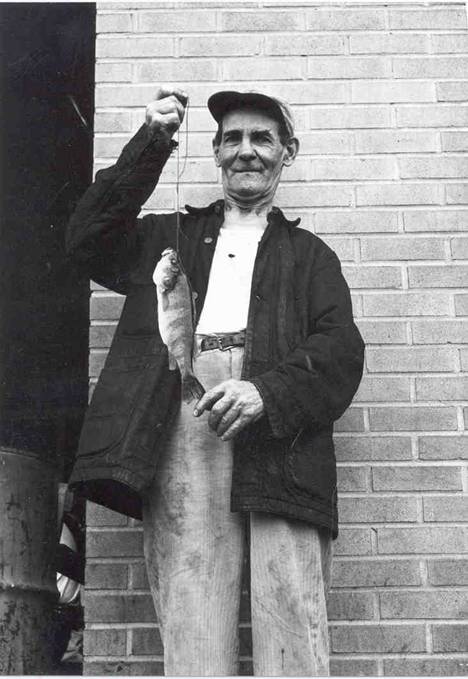
VilNews has a new contributor, Frank Passic from Michigan, USA, who will be sharing with us his vast knowledge about Lithuanian numismatics. The above photo shows Frank’s grandfather who came to USA from the Varniai area in Western Lithuania near Telšiai in 1911. He had just won a fishing contest and was very proud…
Dear readers, we are delighted and honoured that Mr. Frank Passic from Michigan, USA, has graciously offered to share with us his vast knowledge of Lithuanian numismatics. Frank has collected, researched, and written about Lithuanian numismatics for many years. His educational displays of Lithuanian money have won numerous awards at state and national coin shows in the United States. Of Lithuanian heritage, his maternal grandparents emigrated from Lithuania to America just prior to World War I. Frank may be contacted at: albionfp@hotmail.com
- Bookmark :
- Digg
- del.icio.us
- Stumbleupon
- Redit it
- Posted by - (0) Comment

Lithuanian economy in 2012:
From swift recovery
to lower growth
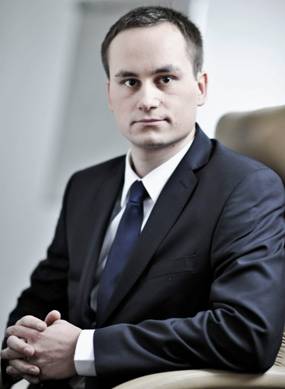
Rokas Bancevičius, Senior analyst, DNB Bank.
This year we celebrate the independence day of Lithuania surrounded by the uncertain economic environment. Lithuania was one of the top growing economies in the EU in 2011 but we are not expecting more of the same in 2012. The key challenges for Lithuania this year will be escalations of debt crisis in the eurozone and the general elections in Lithuania this autumn.
Overall, 2012 will be the year of slower growth and further stabilization in the economy. We expect Lithuania’s GDP to grow in the region between 2.5 – 3 per cent compared to 5.8 per cent in 2011. If Greece crisis is contained and Europe returns to growth at the second half of 2012 Lithuanian economy will end up growing at the higher rate of this range.
- Bookmark :
- Digg
- del.icio.us
- Stumbleupon
- Redit it
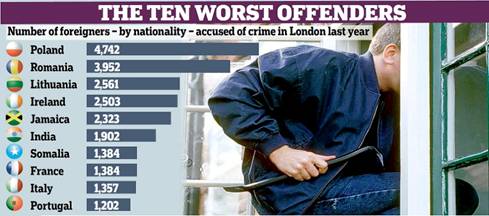
Illustration: http://www.dailymail.co.uk
Eastern European criminals were responsible for more than 11,000 crimes in London last year. Nationals of Poland, Romania and Lithuania were most likely of all foreigners to be prosecuted by the police, an investigation has revealed, according to Mail Online.
Overall, foreigners are accused of one in four of all crimes committed in London.
Astonishingly, they make up nine out of ten drug suspects and are responsible for more than one in three sex offences.
One in four of the East European assailants were Lithuanians, while criminals from Poland
accounted for around 50%. But the percentage in proportion to population shows that Lithuania towers on top with a huge margin. In relation to population there were committed 6.5 times more crimes by Lithuanians than by Poles!
Terrible statistics for a small country that so desperately needs good forces in the recovery and new prosperity after all the years of Soviet oppression.
A report published by Associate Professor Aurelijus Gutauskas at Mykolas Romeris University's Law Faculty gives a very interesting insight into how the economic downturn has led to increased social disparities, crime, fraud and widespread shadow economy in Lithuania, ref https://vilnews.com/?p=6312#idc-container
EU homicide rate per 100 000 population,
average per year, 2007-2009
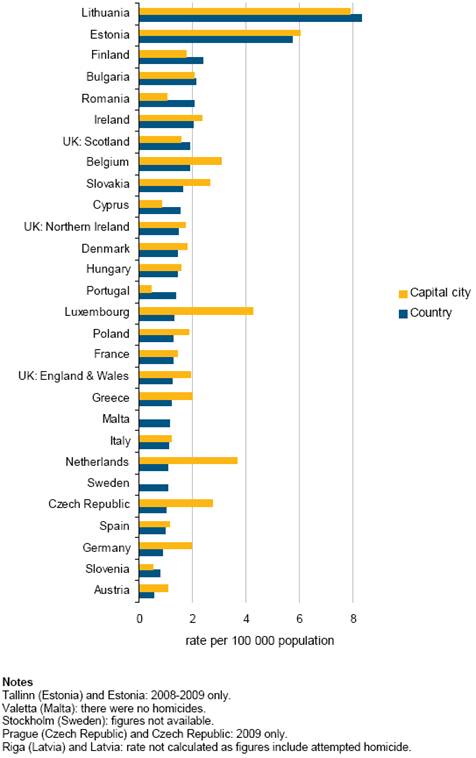
Homicide is a type of violent crime, and is defined as the intentional killing of a person, including murder, manslaughter, euthanasia and infanticide. It excludes death by dangerous driving, abortion and help with suicide. The national figures indicatethat Lithuania and Estonia have by far the highest incidence of homicides (over 8 and 5 victims respectively per 100 000 population).
- Bookmark :
- Digg
- del.icio.us
- Stumbleupon
- Redit it
- Posted by - (0) Comment
Why dignity matters
for Lithuania
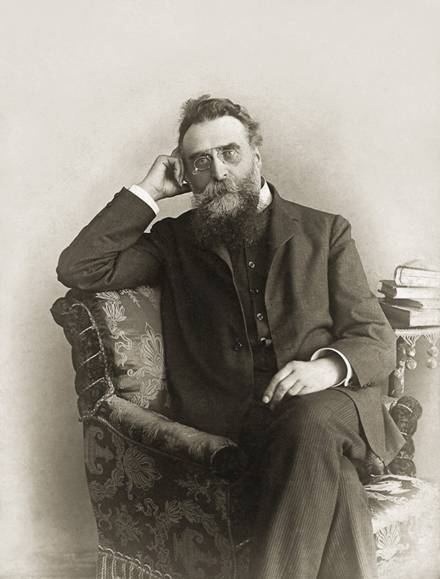
Jonas Basanavičius (23 November 1851 – 16 February 1927) was an activist and proponent of Lithuania's National Revival and founder of the first Lithuanian language newspaper Aušra. He was a signatory of the Act of Independence of Lithuania on 16 February 1918 Basanavičius is often given the unique informal honorific title of the "Patriarch of the Nation" for his contributions and help in re-establishing the Lithuanian state.
By Aage Myhre, Editor-in-Chief
aage.myhre@VilNews.com
“A man's country is not a certain area of land, of
mountains, rivers, and woods, but it is a principle;
and patriotism is loyalty to that principle.”
- George William Curtis
It is 16 February 2012. It is today exactly 94 years since a group of brave men wrote the Lithuanian declaration of independence after the country had been under Tsarist Russia's iron heel through more than 100 years. These men represented a generation that certainly felt an overwhelming sense of pride at the dawn of renewed independence. The Act of February 16 was signed by all 20 representatives of the Council of Lithuania, proclaiming the restoration of an independent State of Lithuania, governed by democratic principles. The meeting and signing procedures were chaired by Jonas Basanavičius, the man often given the unique informal honorific title of the "Patriarch of the Nation" for his contributions and help in re-establishing the Lithuanian state.
What these men presented from the balcony of a house in Pilies street here in Vilnius Old Town was not much more than a piece of paper. But it was a paper that symbolized a nation willing to throw off the yoke. A nation that had won back its self respect and dignity in spite of the injustice and oppression that had been going on since the Russian occupation started in 1795.
We salute these men for their courage and foresight. We salute them because they, in faith, hope and dignity clearly showed that Lithuania wanted to live up to its proud history as a nation of greatness.
Great nations are founded on self-belief!
- Bookmark :
- Digg
- del.icio.us
- Stumbleupon
- Redit it
VilNews e-magazine is published in Vilnius, Lithuania. Editor-in-Chief: Mr. Aage Myhre. Inquires to the editors: editor@VilNews.com.
Code of Ethics: See Section 2 – about VilNews. VilNews is not responsible for content on external links/web pages.
HOW TO ADVERTISE IN VILNEWS.
All content is copyrighted © 2011. UAB ‘VilNews’.

 Click on the buttons to open and read each of VilNews' 18 sub-sections
Click on the buttons to open and read each of VilNews' 18 sub-sections 






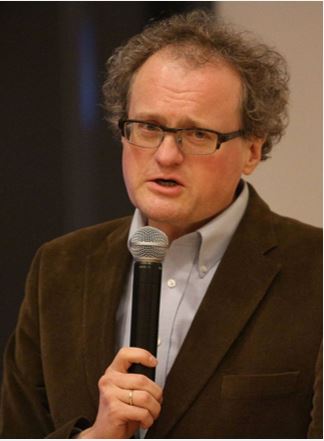

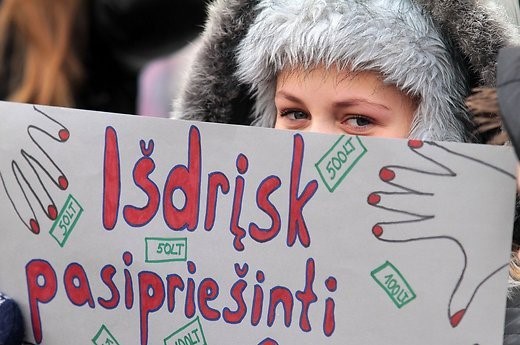


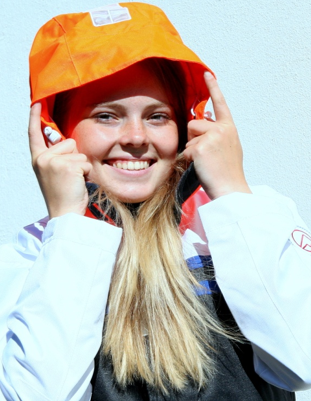
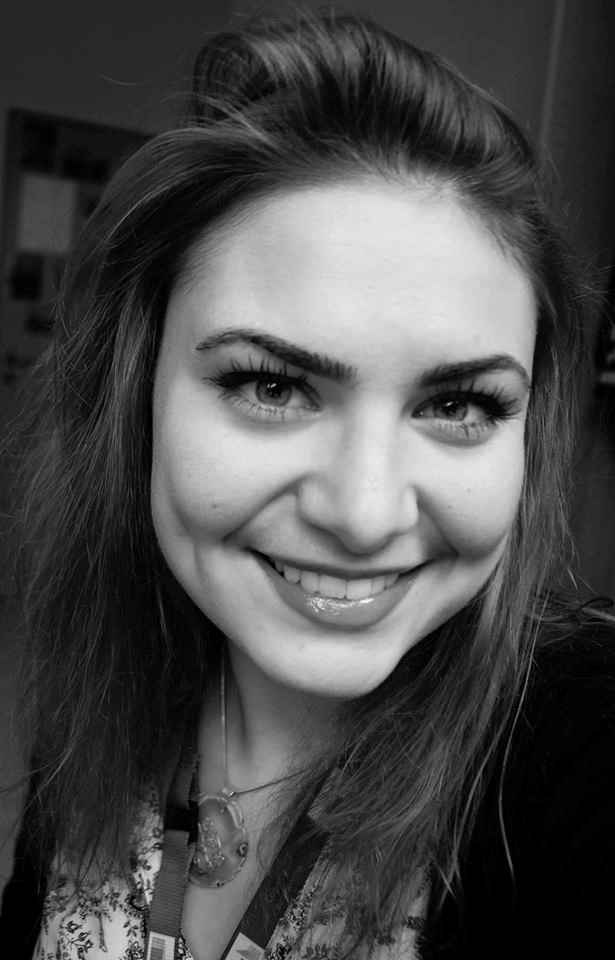

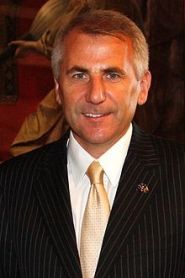
.jpg)
